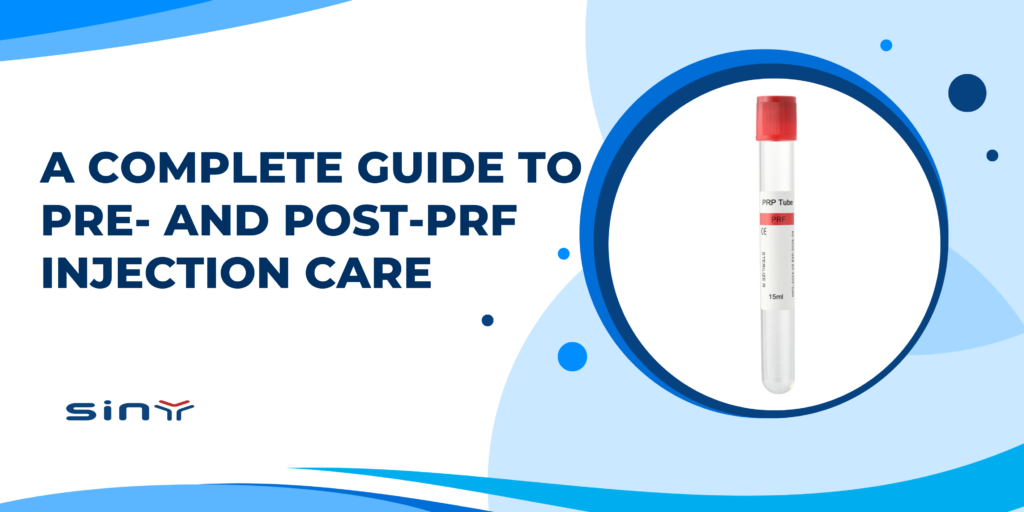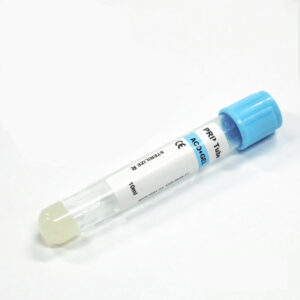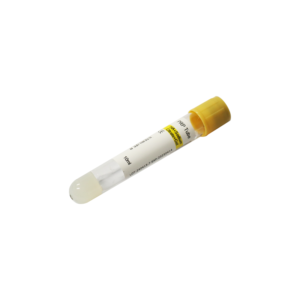A Complete Guide To Pre-And Post-PRF Injection Care. With the continuous advancement of modern regenerative medicine and cosmetic technology, PRF (platelet-rich fibrin) has received widespread attention and application in the fields of hair growth and tissue repair due to its safe and efficient properties derived from the body itself. In order to ensure that each treatment can achieve the best expected results and minimize potential risks, it is crucial to understand the pre-operative preparation and scientific post-operative care. Therefore, read this article to better prepare for your pre- and post-operative treatment.
Learn more about what PRF is.
Before delving into the details of the treatment, we first need to understand what PRF is. Simply put, clinicians obtain PRF by collecting your blood and subjecting it to a specific low-speed centrifugation technique to extract a natural gel-like substance rich in platelets, white blood cells, growth factors, and fibrin. Because it comes entirely from your own body without any anticoagulants or exogenous substances, it significantly reduces the risk of allergies and immune rejection.
Compared with the well-known PRP, PRF can form a three-dimensional fibrin network structure, like a “scaffold”, which can slowly and continuously release growth factors for more than several days, thereby stimulating the regeneration of collagen and elastin for a longer period of time, achieving a lasting effect of repairing tissues and improving skin quality.
For more tips on using PRF tubes, visit this link.
Preoperative preparation for PRF
Thorough preoperative preparation is the first step to ensuring that your treatment goes smoothly and achieves the desired results. It is important to follow these suggestions:
- Adjustments to medications and health products:
- Stop using one week in advance: Please stop using any medications that may affect coagulation function, such as aspirin, ibuprofen, and other non-steroidal anti-inflammatory drugs (NSAIDs).
- Discontinue use during the same period: You also need to stop taking fish oil, vitamin E, vitamin A, ginseng, ginkgo, and other health supplements one week in advance. These ingredients may also increase the risk of bruising and swelling after treatment.
- Lifestyle adjustments:
- Abstinence from alcohol: Avoid drinking alcohol within 48 hours before starting treatment.
- Drink plenty of water: Please ensure that your body is well hydrated before treatment. Drinking plenty of water will help expand blood volume and make the blood extraction process smoother.
- Health status communication: Please be sure to share your health status, medical history, and any medications you are taking with your doctor to ensure that you are a suitable candidate for PRF treatment.
Postoperative care after PRF
Post-treatment care is directly related to the recovery speed and the final effect. Please strictly follow the following care points:
The critical 24-48 hours
- Keep it clean and dry: Avoid getting the injection area wet within 4 hours after treatment and avoid hot baths within 48 hours to prevent bacterial infection.
- Avoid touching and pressing: Never touch, rub, or press the injected area with your hands. This helps reduce the risk of infection and prevents the filler from shifting.
- Avoid high temperature environments: Avoid high temperature environments such as saunas, steam rooms, hot baths, and strenuous exercise, as these activities will aggravate swelling and discomfort.
- Immediate Treatment: Slight redness, swelling, pain, or bruising is normal and will usually subside on its own within 1-3 days. If necessary, apply ice to the area as directed by your doctor to relieve discomfort.
Postoperative recovery period
- Gentle skin care: Use mild, non-irritating skin care products and focus on moisturizing.
- Strict sun protection: Ultraviolet radiation is the main cause of skin aging. Good sun protection can protect new tissues and consolidate the treatment effect.
- Adjust your sleeping position: In the first few days after the injection, try to avoid sleeping on your stomach to reduce pressure on the injection site.
- Continue to discontinue certain medications: Continue to avoid taking nonsteroidal anti-inflammatory drugs (NSAIDs) for at least 3 days after surgery to avoid interfering with the body’s natural repair process.
- Be patient and wait for results: The effects of PRF are gradual. While results will begin immediately after treatment, your body will continue to produce collagen over the next 3-4 months, further improving and enhancing your skin.
You can learn more about the manufacturing expertise of Sinymedical by visiting their About Us page
FAQs about Pre- and Post-PRF Injection Care
Q1: What is the PRF treatment process like? How long does it take?
A: Your doctor will first draw a small amount of blood from your arm, then centrifuge it to extract the PRF. The extracted PRF is then injected into the area requiring treatment. The entire procedure takes about an hour, and you can leave immediately after treatment without affecting your normal work or daily life.
Q2: Is PRF treatment safe? What are the side effects?
A: PRF treatment is very safe. Because the clinician draws it entirely from your own blood without adding chemicals, you face no risk of allergic reactions or disease transmission. The most common side effects are mild redness, bruising, or pain at the injection site, which are temporary.
Q3: How many treatments do I need to see optimal results?
A: The specific number of treatments varies depending on individual skin condition, age, and treatment goals. A course of treatment, such as three consecutive sessions, separated by 4-6 weeks, is generally recommended for optimal and lasting results. Results typically last about a year.
Summary for Pre- and Post-PRF Injection Care
The success of PRF treatment depends not only on the doctor’s professional skills, but also on your own careful care. Please keep the following key points in mind:
- Preoperative core: At least one week in advance, stop taking anti-inflammatory drugs such as aspirin and ibuprofen, and health products such as fish oil and vitamin E, and avoid drinking alcohol to create a “clean” internal environment for treatment.
- Postoperative key: Within 48 hours after surgery, be sure to do “three avoidances” – avoid getting wet, avoid touching and pressing, and avoid high temperatures and strenuous exercise to minimize infection and swelling.
- Long-term persistence: Strict sun protection and gentle moisturizing are the cornerstones to consolidate and prolong the PRF regeneration effect.
Following this professional care guide will help you maximize the therapeutic value of PRF, ensure a safe and smooth recovery period, and ultimately achieve the desired rejuvenation effect.
Important Note: This article is for informational purposes only and is not a substitute for professional medical advice. Before undertaking any cosmetic procedures, please consult a qualified professional physician and seek their guidance for treatment and care.





